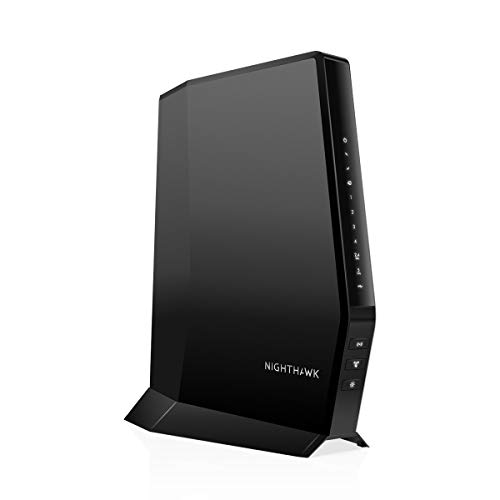In today’s digital age, having a reliable and secure network is crucial for individuals and businesses alike. Mikrotik routers are known for their robust features and flexibility, making them a popular choice for network administrators. However, configuring a Mikrotik router can be daunting for beginners. In this comprehensive guide, we will take you through the essential steps to master Mikrotik router configuration and optimize your network for peak performance.
Introduction to Mikrotik Routers
Mikrotik routers are renowned for their powerful routing capabilities, advanced networking features, and cost-effectiveness. Whether you are setting up a home network, a small business network, or a large enterprise network, Mikrotik routers offer a wide range of functionalities to meet your specific requirements. Proper configuration of a Mikrotik router is essential to ensure smooth operation, security, and optimal performance of your network.
Initial Setup
The initial setup of a Mikrotik router is the first step towards configuring your device effectively. Begin by connecting your router to a power source and your computer using an Ethernet cable. Access the web interface by opening a web browser and entering the default IP address of the router in the address bar. Use the default login credentials provided by Mikrotik to log in to the router’s interface.
Basic Configuration
Once you have logged in to the router’s web interface, it is crucial to change the default password to enhance security. Proceed to set up the IP address of the router to ensure proper communication within the network. Additionally, update the router’s firmware to the latest version to benefit from bug fixes, security patches, and new features.
WAN Configuration
Configuring the Wide Area Network (WAN) interface is vital for establishing connectivity to the internet. You can choose between setting up a dynamic IP address using DHCP or a static IP address provided by your Internet Service Provider (ISP). Implement port forwarding rules to allow external access to specific services hosted within your network.
LAN Configuration
The Local Area Network (LAN) configuration involves setting up the internal network of your organization. Configure the LAN interface with appropriate IP addressing schemes and subnet masks. Enable the DHCP server on the router to automatically assign IP addresses to devices connected to the network. Consider creating Virtual LANs (VLANs) for segmenting network traffic and enhancing security.
Wireless Configuration
Mikrotik routers support wireless connectivity, allowing you to create Wi-Fi networks for seamless connectivity. Enable the wireless interface on the router and configure the Service Set Identifier (SSID) and security settings, such as encryption and authentication methods. Set up a guest network to provide internet access to visitors while maintaining the security of your primary network.
Firewall Configuration
A robust firewall is essential for safeguarding your network from unauthorized access, malicious attacks, and unwanted traffic. Establish basic firewall rules to control incoming and outgoing traffic. Utilize port blocking and filtering techniques to restrict access to specific ports and services. Implement intrusion detection and prevention mechanisms to detect and mitigate potential security threats.
Quality of Service (QoS)
Quality of Service (QoS) settings allow you to prioritize network traffic based on predefined rules, ensuring that critical applications receive sufficient bandwidth and low-latency connectivity. Configure QoS parameters on your Mikrotik router to manage bandwidth effectively and optimize network performance for latency-sensitive applications such as VoIP or video streaming.
VPN Configuration
Virtual Private Networks (VPNs) provide secure remote access to your network resources over the internet. Set up a VPN server on your Mikrotik router to allow remote users to connect securely. Configure VPN clients on remote devices to establish encrypted connections to your network. Implement security measures such as encryption and authentication protocols to protect sensitive data during transit.
Monitoring and Maintenance
Regular monitoring and maintenance are essential for ensuring the health and security of your network infrastructure. Monitor network traffic using built-in tools or third-party applications to identify potential issues or anomalies. Configure logging and alerts to receive notifications about critical events or security incidents. Perform routine maintenance tasks such as updating firmware, backing up configurations, and optimizing performance.
Final Thought
In conclusion, mastering Mikrotik router configuration is a valuable skill that empowers you to take control of your network environment. By following this step-by-step guide, you can enhance the security, performance, and reliability of your network infrastructure. Remember to troubleshoot common issues using the tips provided in this guide and explore additional resources for ongoing learning and professional development in networking.
Whether you are a seasoned IT professional or a novice enthusiast, mastering Mikrotik router configuration will equip you with the knowledge and skills needed to build resilient networks that meet the demands of today’s digital landscape. Embrace the challenge, explore the possibilities, and elevate your networking expertise with Mikrotik routers.
By following this detailed guide, you will be able to navigate the complexities of Mikrotik router configuration with ease and optimize your network for improved performance and security. Let’s dive in and master the art of Mikrotik router configuration!
Fig: MikroTik Router
Features of MikroTik Router:
There are a lot of features exist in MikroTik Router. MikroTik is one kind of network device. It is the most important for Bandwidth Control, Firewall configures, Private virtual network( VPN ), IPsec, GRE over IPsec, Ether over internet protocol ( EoIP ), Open short path fast ( OSPF ), Virtual local area network ( VLAN ), BGP configure, Load balance and Bandwidth merge with Failover, redundant communications Link by MikroTik router. We will discuss step by step about MikroTik Router. Stay with us.



Leave a Reply
You must be logged in to post a comment.